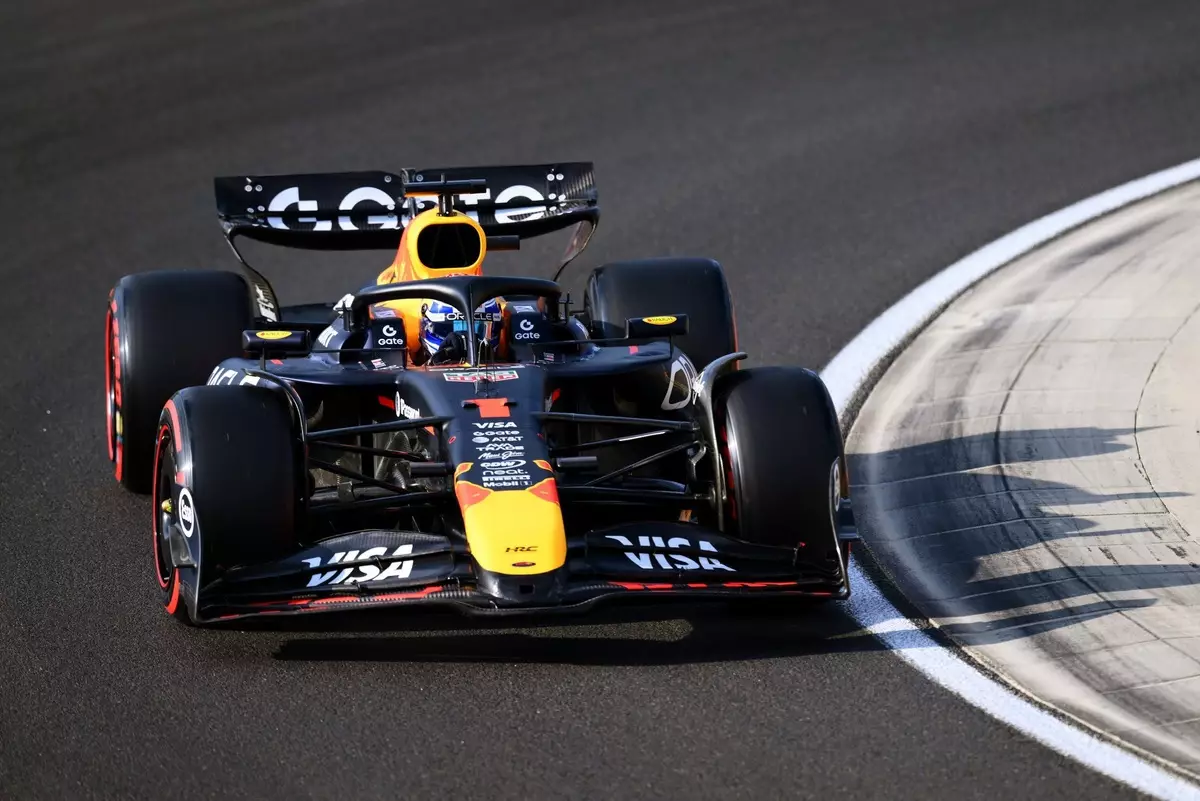Max Verstappen entered the Hungarian Grand Prix weekend with high expectations but encountered an unexpected and perplexing set of challenges. The Dutch driver’s reflections on the opening practice sessions reveal a car that is fundamentally not performing as intended, casting doubt over Red Bull’s readiness for the race. His candid acknowledgment that “nothing really works” signifies a critical moment, emphasizing how quickly fortunes can turn in Formula 1 when a car’s baseline performance crumbles under track conditions.
Having finished FP2 in 14th position, Verstappen’s frustration is palpable. His description of the RB21 as “driving on ice” underscores severe issues with grip and stability. This metaphor not only paints a vivid image of the car’s unpredictable behavior but also signals a fundamental problem that could stem from aerodynamic deficiencies, tire management issues, or setup errors. The fact that he and the team had to retreat into a lengthy debriefing suggests that, from a strategic standpoint, the team is grasping at straws, trying to diagnose what might seem to be an intrinsic, elusive flaw. Such situations expose the precariousness of F1 engineering—where even reigning world champions are not immune to technical setbacks.
The broader context for Verstappen’s tough Friday lies in the unpredictable nature of race weekend starts. While Red Bull has a reputation for rapid turnaround and innovation, this session demonstrates that even top-tier teams can be left reeling. The disparity between Verstappen’s car and competitors like McLaren, which seems “flying,” indicates a significant gap in setup or performance. Despite his motivation to improve, Verstappen concedes that “nothing really works,” a rare but telling frustration that hints at deeper issues with the car’s baseline configuration. As he looks towards the overnight investigation, it becomes clear that Red Bull’s engineering team’s ability to identify these problems swiftly will be the key to salvaging the weekend.
Incidents and Their Significance: The Towel and the Stewards’ Warning
In addition to the technical frustrations, Verstappen’s day also involved a regulatory professional mishap—a reminder of how minutiae can impact race protocols and perceptions. The incident with the towel, which was accidentally left in the car and subsequently expelled during practice, resulted in a warning for an unsafe release. While seemingly minor, such incidents can have ripple effects, affecting team morale and driver focus. Verstappen’s explanation that the towel was simply used for face-wiping and that it was removed in the safest manner demonstrates a composed attitude amid the chaos, but it also underscores how delicate safety and compliance are in the sport.
This episode tentatively hints at possible lapses in pre-session checks, which teams must rigorously enforce to avoid penalties. While not critical on its own, it exemplifies how even small oversights can disrupt a driver’s concentration and add unnecessary pressure. Verstappen’s transparent account indicates a well-managed response, but it reinforces the importance of meticulous attention to detail from all personnel involved.
Yuki Tsunoda’s Perspective: Different Challenges, Similar Uncertainty
While Verstappen struggles with fundamental grip and balance issues, his teammate Yuki Tsunoda offers a contrasting but equally telling perspective. Though he finished ninth and is still getting closer to Red Bull’s latest specifications, Tsunoda admits that his main challenge isn’t outright speed but rather the lack of grip. This highlights a nuanced dichotomy: one driver perceives the core issue as balance, another as available grip. Together, their feedback encapsulates a team facing an ambiguous problem—one that requires careful, methodical investigation to resolve.
Tsunoda’s reports of adjustments leading to marginal improvements from FP1 to FP2 demonstrate incremental progress, yet they also suggest that the solution isn’t near at hand. The fact that Tsunoda is “getting closer” indicates potential but not enough to assume victory or even a competitive position. Red Bull’s priority will be to understand whether these grip deficits are remedial with setup tweaks or symptomatic of deeper technical issues.
The Road Ahead: Navigating Uncertainty in Pursuit of Performance
The day’s revelations reinforce that F1 weekends are often a test of resilience and adaptability. Red Bull’s challenge is to convert their initial setbacks into opportunities for rapid improvement. The pattern of past seasons suggests the team has the capacity for overnight fixes, but the complexity of this particular issue raises questions about how profound the problem might be. The Hungaroring, with its demanding layout and high downforce requirements, amplifies these difficulties, turning a typical Friday into a critical diagnostic phase.
Finally, Verstappen’s candidness about the car’s state serves as a reminder of the relentless pursuit of perfection in Formula 1. Even for a reigning champion, success hinges on the smallest details, and in moments of adversity, teams and drivers must dig deep, analyze with precision, and adapt swiftly. Although the weekend has started on a difficult note, the true measure of Red Bull’s resilience will be whether they can translate these early struggles into a competitive edge come race day.

